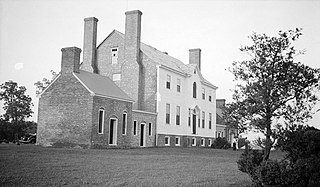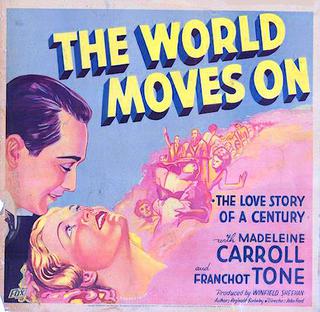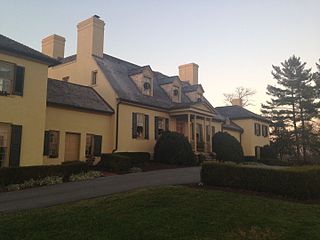
Adelphi is an unincorporated area and census-designated place in Prince George's County, Maryland, United States. Per the 2020 Census, the population was 16,823. Adelphi includes the following subdivisions; Adelphi, Adelphi Park, Adelphi Hills, Adelphi Terrace, Adelphi Village, Buck Lodge, Chatham, Cool Spring Terrace, Hillandale Forest, Holly Hill Manor, Knollwood, Lewisdale, and White Oak Manor.

Chillum is an unincorporated area and census-designated place in Prince George's County, Maryland, United States, bordering Washington, D.C. and Montgomery County.

Colmar Manor is a town located in Prince George's County, Maryland, United States. As of the 2010 census, the town had a population of 1,404. As the town developed at the beginning of the 20th century, it assumed a name derived from its proximity to the District of Columbia—the first syllable of Columbia and that of Maryland were combined to form "Colmar". Colmar Manor was incorporated in 1927.

Oxon Hill is an unincorporated area and census-designated place (CDP) in southern Prince George's County, Maryland, United States. Oxon Hill is a suburb of Washington, located southeast of the downtown district and east of Alexandria, Virginia. It contains the new 300-acre (120 ha) National Harbor development on the shore of the Potomac River.
Thomas Sim Lee was an American planter, patriot and politician who served as Maryland Governor for five one-year terms, as well as in the Congress of the Confederation (1783-84), Maryland Ratification Convention of 1788 and House of Delegates in 1787. He also held local offices and owned many town lots in Georgetown (which became part of the new federal city, Washington, District of Columbia,and spent his final decades operating "Needwood" plantation in Frederick County, Maryland. In addition to working closely with many of the Founding fathers, he played an important part in the birth of his state and the nation.

Fort Washington, located near the community of Fort Washington, Maryland, was for many decades the only defensive fort protecting Washington, D.C. The original fort, overlooking the Potomac River, was completed in 1809, and was begun as Fort Warburton, but renamed in 1808. During the War of 1812, the fort was destroyed by its own garrison during a British advance.

Gustavus Richard Brown was a lifelong friend of George Washington, a physician, helped found the hospital department of the Continental Army, and a botanist. He is best known as one of the doctors summoned to attend to George Washington the night he died.

The World Moves On is a 1934 American drama film directed by John Ford and starring Madeleine Carroll and Franchot Tone. It was the first Hollywood code approved film.

Melwood Park is a historic home located near Upper Marlboro in Prince George's County, Maryland, United States. It is a 2+1⁄2-story, Flemish bond brick structure, with Georgian details. As of 2009, it is undergoing an extensive restoration. This unique dwelling was visited by George Washington on several occasions and the British Army camped here during their march to Washington, D.C. in August 1814, during the War of 1812.

St. Thomas Manor (1741) is a historic home and Catholic church complex located near Port Tobacco, Charles County, Maryland. Known as St. Ignatius Church and Cemetery, the manor house complex is the oldest continuously occupied Jesuit residence in the world. The mission settlement of Chapel Point was established in 1641 by Father Andrew White, S.J., an English Jesuit missionary. Father White ministered to the Potapoco Native Americans, some of whom he converted to Catholicism. Established in 1662, this is the oldest continuously active Roman Catholic parish in the American Thirteen Colonies. With the consecration in 1794 of Bishop John Carroll, St. Thomas became the first Roman Catholic see in the United States.
George Hume Steuart, (1700–1784) was a Scottish physician, tobacco planter, and Loyalist politician in colonial Maryland. Born in Perthshire, Steuart emigrated to Maryland in around 1721, where he benefited from proprietarial patronage and was appointed to a number of colonial offices, eventually becoming a wealthy landowner with estates in both Maryland and Scotland, and serving two terms as mayor of Annapolis. However, he was forced by the outbreak of the American Revolution to decide whether to remain loyal to the Crown or to throw in his lot with the American rebels. In 1775 Steuart sailed to Scotland, deciding at age 75 that "he could not turn rebel in his old age". He remained there until his death in 1784.

Croom is an unincorporated community and census-designated place in Southern Prince George's County, Maryland, United States. As of the 2020 census it had a population of 2,720. Croom largely consists of former tobacco farms and forests converted to Washington bedroom subdivisions such as nearby Marlton. The main part of Patuxent River Park is in Croom.
Colonel William Digges was a prominent planter, soldier and politician in the Colony of Virginia and Province of Maryland. The eldest son of Edward Digges (1620-1674/5), who sat on the Virginia Governor's Council for two decades but died shortly before Bacon's Rebellion, Digges fled to Maryland where he married Lord Calvert's stepdaughter and served on the Maryland Proprietary Council until losing his office in 1689 during the Protestant Revolution, when a Puritan revolt upset the Calvert Proprietorship. His eldest son Edward sold his primary Virginia plantation to his uncle Dudley Digges. It is now within Naval Station Yorktown. His former Maryland estate, Warburton Manor, is now within Fort Washington Park. Two additional related men with the same name served in the Virginia General Assembly, both descended from this man's uncle and his grandson Cole Digges (burgess). William Digges (burgess) and his son William Digges Jr. both represented now-defunct Warwick County, Virginia.

The Belmont Estate, now Belmont Manor and Historic Park, is a former plantation located at Elkridge, Howard County, Maryland, United States. Founded in the 1730s and known in the Colonial period as "Moore's Morning Choice", it was one of the earliest forced-labor farms in Howard County, Maryland. Its 1738 plantation house is one of the finest examples of Colonial Georgian architectural style in Maryland.

The Digges-Sasscer house is an historic building in Upper Marlboro, Maryland. It has been home to Lansdale Ghiselin Sasscer, Lansdale Ghiselin Sasscer, Jr. and Daniel Carroll Digges. The house has been documented by the Historic American Buildings Survey and is listed in the Maryland Historical Trust.

Denbigh Plantation Site, also known as Mathews Manor, is a historic archaeological site located at Newport News, Virginia. Mathews Manor was built about 1626 for Captain Samuel Mathews. The post-medieval Mathews Manor included a projecting porch and center chimney, both characteristic of Virginia's earliest substantial dwellings. Mathews's house burned about 1650 and was replaced with a smaller house nearby, probably by his son, Samuel Mathews, Jr. (1630-1660), governor of Colonial Virginia (1656-1660). Before the American Revolutionary War, the property was acquired by the Digges family, who constructed a manor house nearby. That was the residence of William Digges, who was one of Warwick County's representatives in the House of Burgesses, revolutionary conventions and the Virginia Ratification Convention. The property was referred to as Denbigh Plantation since the 18th century.

Mary Digges Lee was the "First Lady of Maryland" during portions of the American Revolution, while her husband, Thomas Sim Lee, was the state's governor. Lee was later inducted into the Maryland Women's Hall of Fame.
Walter Mitchell Digges was a lawyer, judge, and delegate in the Maryland General Assembly in Maryland, United States. He was a member of the Democratic Party, and served as a Justice of the state's high court, the Maryland Court of Appeals from 1923 to 1934.
Henry Darnall II (1682-1759) was a wealthy Roman Catholic planter in Colonial Maryland. He was the son of the politician and planter Henry Darnall, who was the Proprietary Agent of Charles Calvert, 3rd Baron Baltimore, and served for a time as Deputy Governor of the Province. During the Protestant Revolution of 1689, Henry Darnall I's proprietarial army was defeated by the Puritan army of Colonel John Coode, and he was stripped of his numerous colonial offices. After his father's death, Henry Darnall II did not enjoy political power in Maryland, but he remained wealthy thanks to his family's extensive estates. He married twice, fathering many children. His eldest son Henry Darnall III (c1702-c1783) inherited the bulk of what remained of his estates, and one of his grandchildren, Daniel Carroll, would become one of the Founding Fathers of the United States. A small portion of Darnall's former property, now called Darnall's Chance, can still be visited today.















